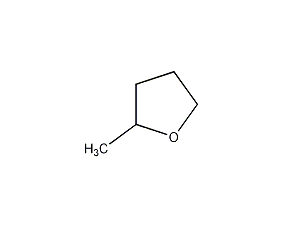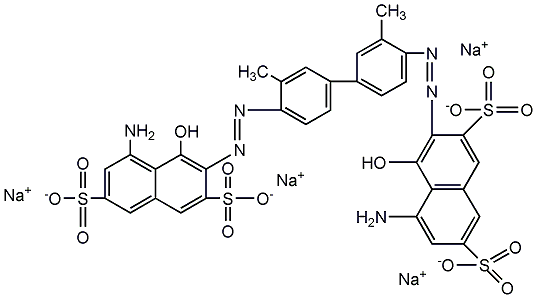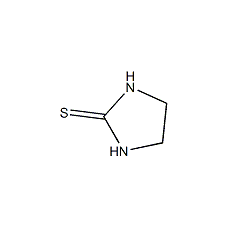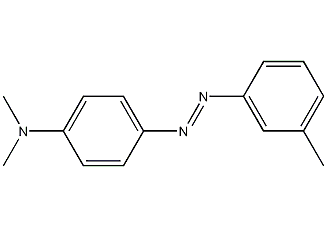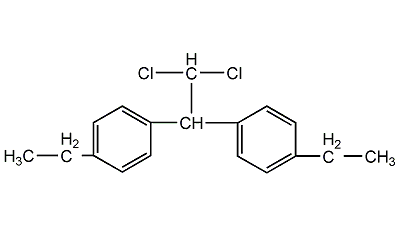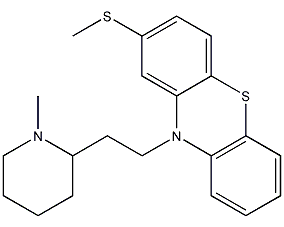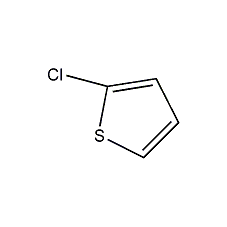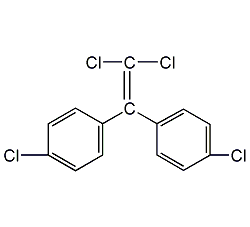dibromobiphenyl
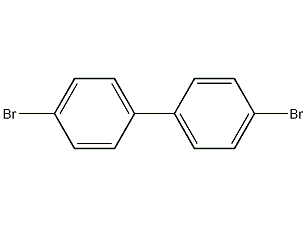
Structural formula
| Business number | 025D |
|---|---|
| Molecular formula | C12H8Br2 |
| Molecular weight | 312.00 |
| label |
4,4′-Dibromobiphenyl, 4,4-Dibromobiphenyl, 4,4′-Dibromobiphenyl, 4,4′-dibromobiphenyl, 4,4′-dibromobiphenyl, 4,4′-Diphenylbromobenzene, p’-Dibromobiphenyl, 4,4′-Dibromo-1,1′-biphenyl |
Numbering system
CAS number:92-86-4
MDL number:MFCD00000101
EINECS number:202-198-6
RTECS number:None
BRN number:2044701
PubChem number:24860793
Physical property data
1. Properties: brown oily substance.
2. Gas phase standard entropy (J·mol-1·K-1): 468.1
3. Gas phase standard Hot melt (J·mol-1·K-1): 200.7
4. Melting point (ºC): 168
5. Boiling point (ºC, normal pressure): 355-360
6. Boiling point (ºC, 666Pa): 155~175
7. Refractive index: Undetermined
8. Flash point (ºC): Not determined
9. Specific rotation (º): Undetermined
10. Autoignition point or ignition temperature (ºC) : Undetermined
11. Vapor pressure (kPa, 25ºC): Undetermined
12. Saturated vapor pressure (kPa, 60ºC): Undetermined
13 . Heat of combustion (KJ/mol): Undetermined
14. Critical temperature (ºC): Undetermined
15. Critical pressure (KPa): Undetermined
16. Log value of oil-water (octanol/water) partition coefficient: Undetermined
17. Explosion upper limit (%, V/V): Undetermined
18. Explosion Lower limit (%, V/V): Undetermined
19. Solubility: soluble in benzene, slightly soluble in hot ethanol, insoluble in water
Toxicological data
None
Ecological data
Molecular structure data
1. Molar refractive index: 66.22
2. Molar volume (cm3/mol): 187.0
3. Isotonic specific volume (90.2K ): 481.6
4. Surface tension (dyne/cm): 43.9
5. Polarizability (10-24cm3): 26.25
Compute chemical data
1. Calculation of hydrophobic parametersTest value (XlogP): None
2. Number of hydrogen bond donors: 0
3. Number of hydrogen bond acceptors: 0
4. Number of rotatable chemical bonds: 1
5. Number of tautomers: None
6. Topological molecule polar surface area 0
7. Number of heavy atoms :14
8. Surface charge: 0
9. Complexity: 145
10. Number of isotope atoms: 0
11 .Determine the number of atomic stereocenters: 0
12. Uncertain number of atomic stereocenters: 0
13. Determine the number of chemical bond stereocenters: 0
14. Number of uncertain chemical bond stereocenters: 0
15. Number of covalent bond units: 1
Properties and stability
None
Storage method
This product should be kept sealed.
Synthesis method
Obtained by bromination of biphenyl: contact biphenyl with bromine vapor for 8 hours to form an orange solid, and place it in a fume hood for more than 4 hours to obtain a crude product. The melting point is about 152℃. Recrystallize it with benzene to obtain the finished product. The yield is 75%~77%. 
Purpose
Used as intermediates for dyes and organic pigments
extended-reading:https://www.newtopchem.com/archives/1878extended-reading:https://www.newtopchem.com/archives/39995extended-reading:https://www.bdmaee.net/pc-cat-np60-hard-foam-catalyst-dimethylbenzylamine-nitro/extended-reading:https://www.bdmaee.net/wp-content/uploads/2022/08/2.jpgextended-reading:https://www.cyclohexylamine.net/high-quality-246-trisdimethylaminomethylphenol-cas-90-72-2-dmp-30/extended-reading:https://www.newtopchem.com/archives/44533extended-reading:https://www.bdmaee.net/wp-content/uploads/2020/06/29.jpgextended-reading:https://www.bdmaee.net/polycat-dbu-catalyst-cas6674-22-2-evonik-germany/extended-reading:https://www.bdmaee.net/nt-cat-a-1-catalyst-cas3033-62-3-newtopchem/extended-reading:https://www.bdmaee.net/wp-content/uploads/2022/08/81.jpg
